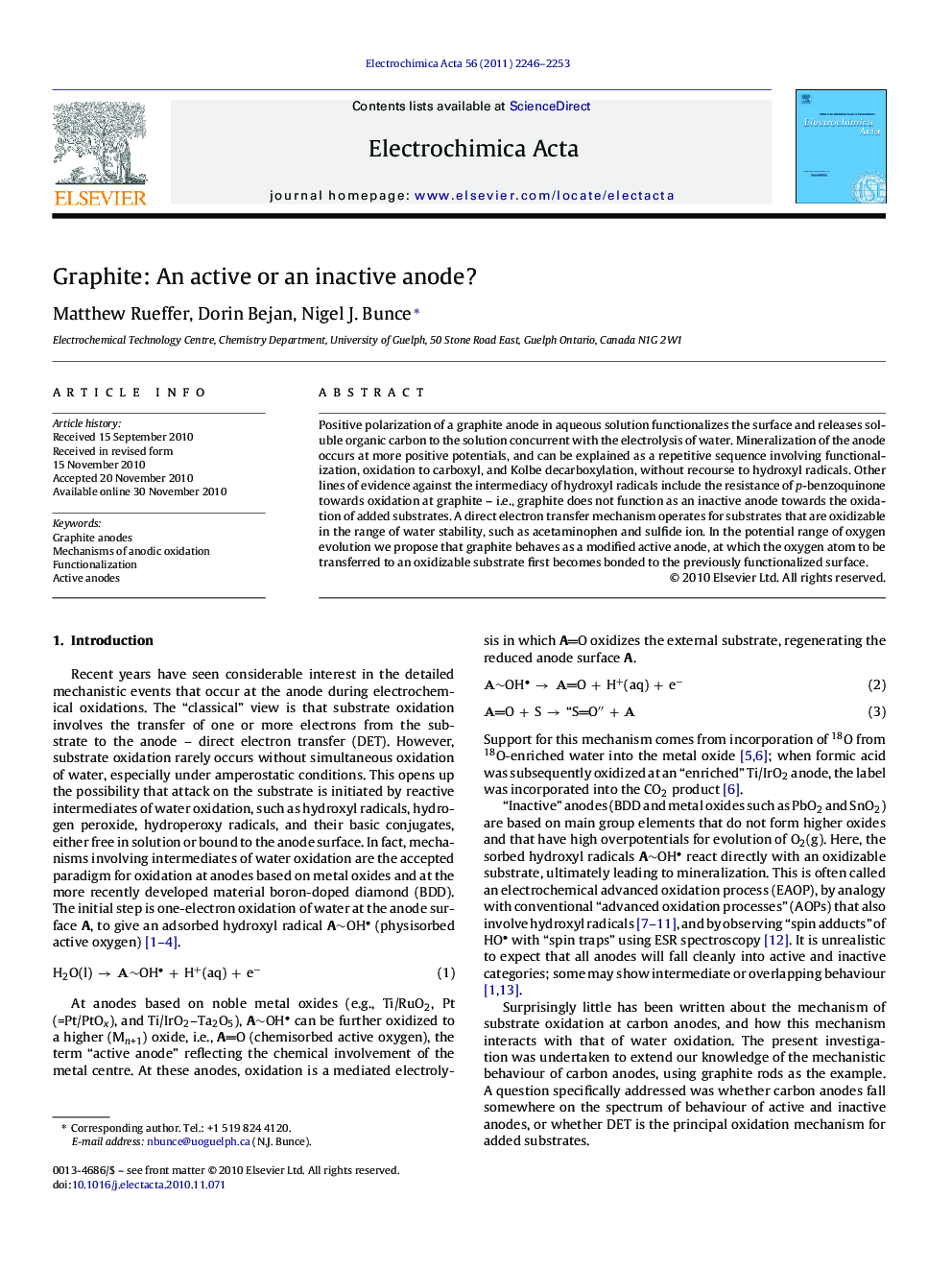| Article ID | Journal | Published Year | Pages | File Type |
|---|---|---|---|---|
| 10269131 | Electrochimica Acta | 2011 | 8 Pages |
Abstract
Positive polarization of a graphite anode in aqueous solution functionalizes the surface and releases soluble organic carbon to the solution concurrent with the electrolysis of water. Mineralization of the anode occurs at more positive potentials, and can be explained as a repetitive sequence involving functionalization, oxidation to carboxyl, and Kolbe decarboxylation, without recourse to hydroxyl radicals. Other lines of evidence against the intermediacy of hydroxyl radicals include the resistance of p-benzoquinone towards oxidation at graphite - i.e., graphite does not function as an inactive anode towards the oxidation of added substrates. A direct electron transfer mechanism operates for substrates that are oxidizable in the range of water stability, such as acetaminophen and sulfide ion. In the potential range of oxygen evolution we propose that graphite behaves as a modified active anode, at which the oxygen atom to be transferred to an oxidizable substrate first becomes bonded to the previously functionalized surface.
Keywords
Related Topics
Physical Sciences and Engineering
Chemical Engineering
Chemical Engineering (General)
Authors
Matthew Rueffer, Dorin Bejan, Nigel J. Bunce,
